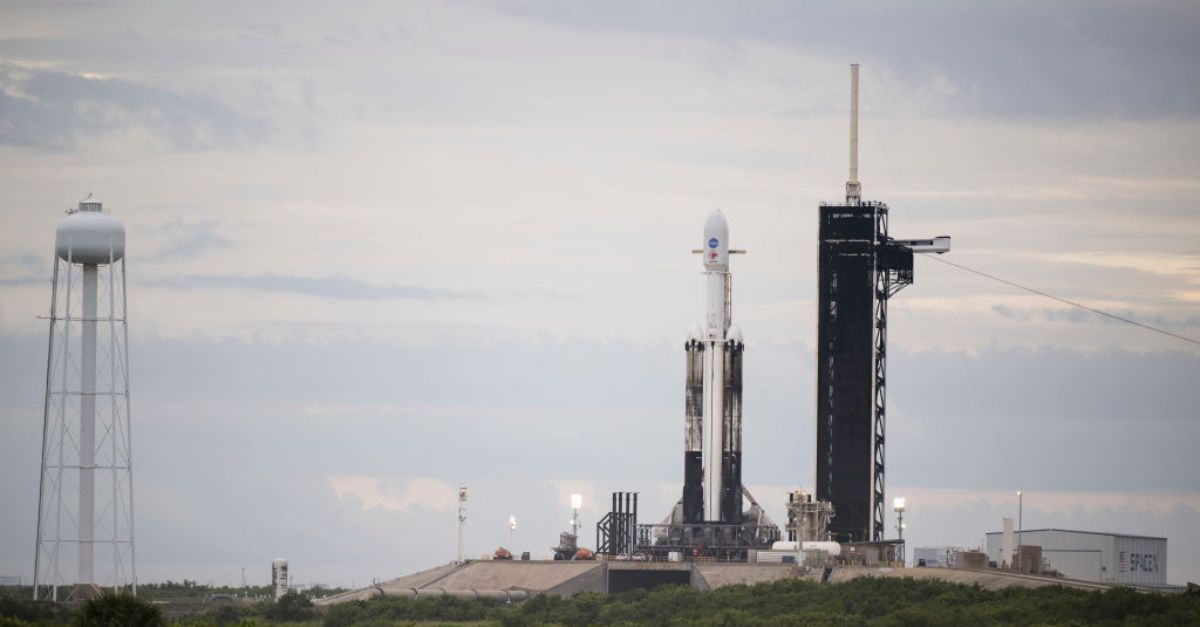
NASA is preparing to launch a new spacecraft into space Friday morning, and its destination will be a massive asteroid inside the main asteroid belt between Mars and Jupiter.
According to NASA, the spacecraft, named Psyche, was initially supposed to launch at 10:16 a.m. ET Thursday, but the launch was postponed to Friday at 10:19 a.m. due to unfavorable weather conditions.
The potato-shaped asteroid, which has the same name as the spacecraft, is roughly the size of Massachusetts. As reported by MIT News, astronomers presume the asteroid to be composed of mostly metal, which could be the remnant of an infant planet similar to Earth.
“It’s a puzzle. And you have to not only figure out how the pieces fit together, but you have to figure out what the pieces are,” MIT Research Scientist Jodie Ream, who helped in the magnetometer’s design, said.
On Friday, Psyche will launch aboard the SpaceX Falcon Heavy rocket and will embark on a six-year journey toward the asteroid. In 2026, the spacecraft is expected to approach Mars, where the planet’s gravitational pull will direct Psyche toward the space rock.
The mission will begin sometime in 2029, when the spacecraft will spend about 26 months orbiting the asteroid while analyzing its surface composition, mapping its gravity, and measuring any magnetic field it might possess.
MIT alumna and former professor Lindy Elkins-Tanton is Psyche’s principal investigator, while Benjamin Weiss, an MIT professor of planetary science, is deputy principal investigator.
“Being able to undertake fundamental exploration of a new kind of world is a thrill and a privilege beyond anything I had envisioned for my life,” Elkins-Tanton says. “But the best part of it is helping to create and support a huge team of people who are all on this journey together.”
Scientists hypothesized that Psyche holds a naked metallic core, which could also hold the elements that also formed the Earth’s center. They also believe that the asteroid could have gone through multiple collisions that broke off its rocky surface when Earth and other rocky planets had been accumulating material around their metal-rich cores about 4.5 billion years ago.
“This will be the first time we’ve sent a mission to a body that is not mostly rock or ice but metal,” Weiss says. “Not only is this asteroid potentially a metal world, but asteroids are building blocks of planets. So Psyche could tell us something about how planets formed.”
Photo Courtesy: ©Getty Images/NASA / Handout
Video Courtesy: NASA via YouTube
Milton Quintanilla is a freelance writer and content creator. He is a contributing writer for Christian Headlines and the host of the For Your Soul Podcast, a podcast devoted to sound doctrine and biblical truth. He holds a Masters of Divinity from Alliance Theological Seminary.
Related podcast:
The views and opinions expressed in this podcast are those of the speakers and do not necessarily reflect the views or positions of Salem Web Network and Salem Media Group.
Related video:
We would do well to consider how biblical patterns might inform our contemporary actions. Read James Spencer’s full article here.
Sound and Photo Credit:©/iStock/Getty Images Plus/skynesher
